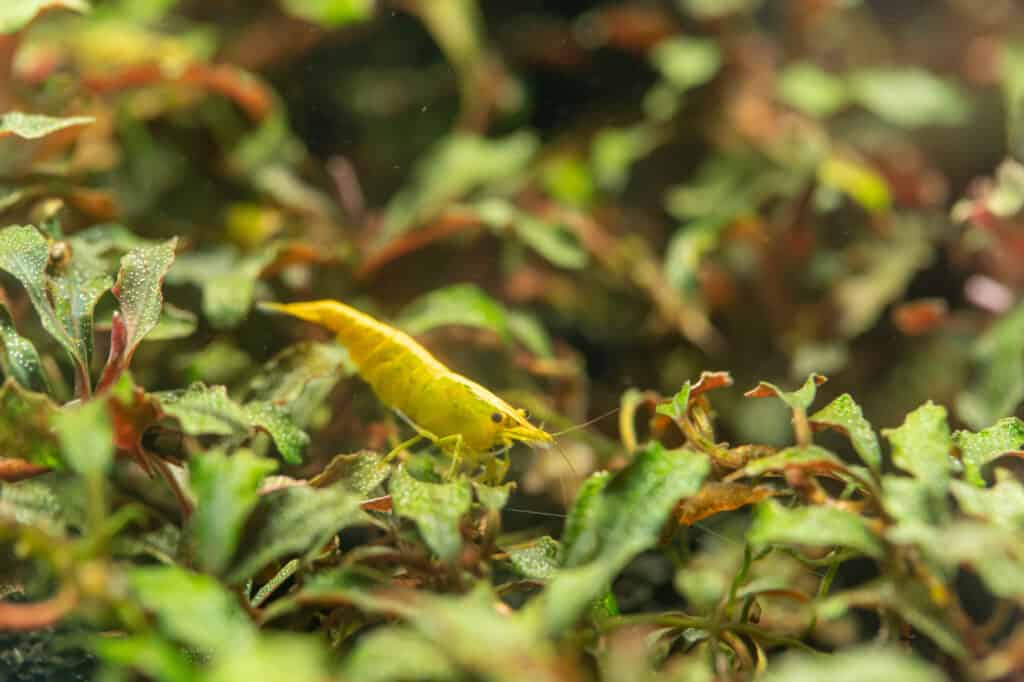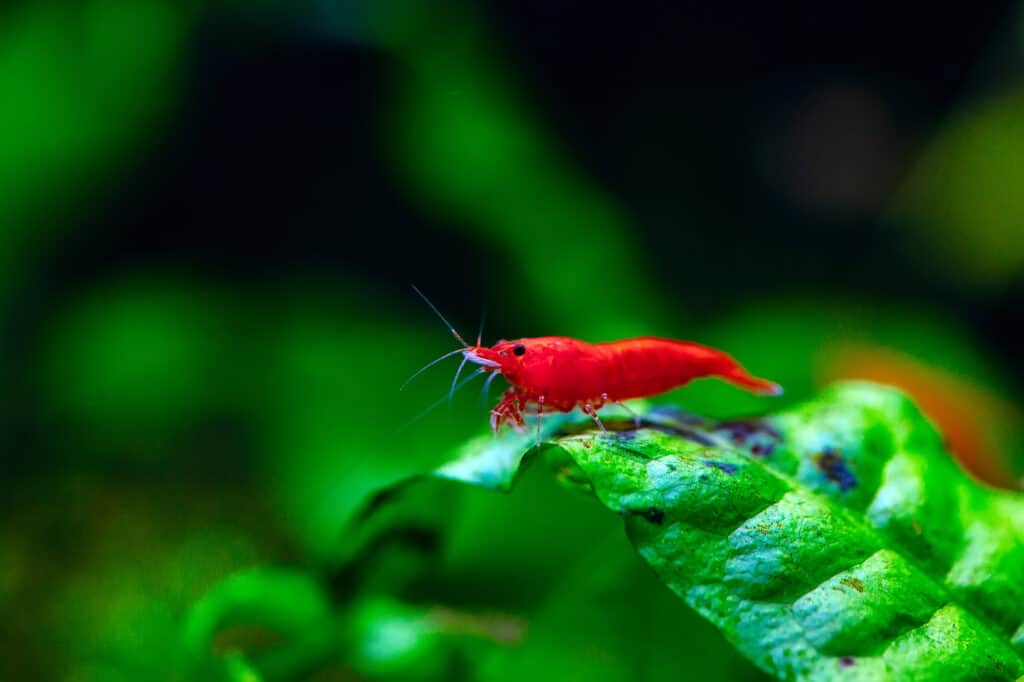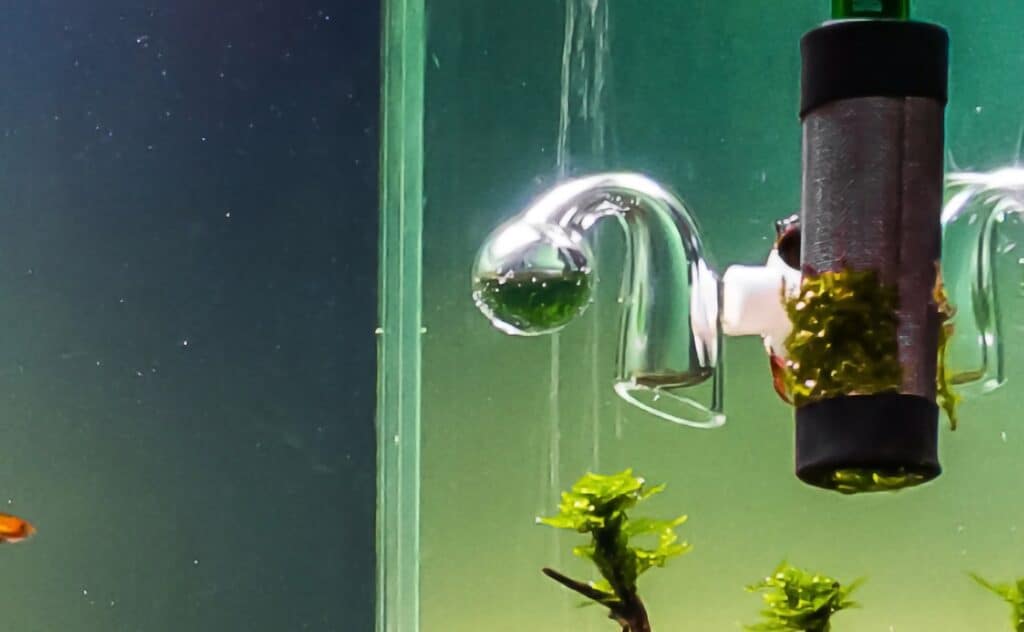
Very often when having a planted aquarium, freshwater shrimp will be added as a tank inhabitant.
Plants and freshwater shrimp naturally go together in many instances.
Planted tanks will also in many cases have CO2 being added in some way, and there can be a question on whether both the addition of CO2 and the increased levels will impact the freshwater shrimp.
Adding CO2 to your tank in itself has little to no risk of harming or causing issues with freshwater shrimp.
This is especially true when CO2 levels are monitored and kept in check as too high of levels can not only impact the shrimp but all other inhabitants as well, since it can cause a reduction in available oxygen for them to breathe.
Let’s dive into why CO2 levels need to be kept in check and monitored when adding it to your tank, to make sure there is no impact to your freshwater shrimp.

The Impact CO2 Can Have On Your Shrimp and Water
There is such a thing as having too much CO2 in your tank.
Not only can this lead to health problems for your tank inhabitants such as freshwater shrimp, but it is also a waste of a resource being added as your plants can only use so much before the additional CO2 becomes unused and simply leaves the water at the surface.
To begin with, as with any living creature, freshwater shrimp require a well-oxygenated tank to survive and thrive.
With levels of CO2 too high, the available dissolved oxygen in the water becomes depleted and unavailable.
This in turn causes respiratory issues with freshwater shrimp as it will become harder for them to breathe.
CO2 being added will also affect the water chemistry, especially when at high levels as it causes the water to become more acidic.
Over time if left unchecked this change in the water pH levels from excess CO2 can also cause breathing issues and make it harder for them to survive in your tank.
Common symptoms of this occurring are a visible drop in activity levels, signs of molting issues, and in extreme cases death.
It is vital to monitor your CO2 levels when adding it to your tank for your plants and be able to find the balance between the level of CO2 that still provides benefits to the tank’s plants, but keeps an environment that promotes health for the freshwater shrimp, and maintain it.
To learn more about how much CO2 you should add to your tank, read my article here.

Balancing CO2 Levels To Promote Freshwater Shrimp and Plant Health
When adding CO2 in your tank it’s important to find the correct balance that allows your CO2 to provide benefits to your plants, along with keeping your shrimp healthy.
The best way to make sure your levels are in an ideal range is to monitor them with a CO2 drop checker.
This tool has a glass bulb that holds a solution, changing colors based on the level of dissolved CO2 in the water.
The simple tool gives a clear indication of where your CO2 is, if showing levels are too low, then it is not at the optimal levels to provide the complete benefits for your plants, at an indication of too high of levels, there is a risk of harm being done to the shrimp both with respiratory and molting issues, as well as CO2 going to waste since the plants are only able to use so much.
Having the levels in the optimal zone, indicated by the drop checker will allow the levels to give the best environment for your shrimp and the plants.
Once you have your levels in check, and are wondering how long and at what times you should be adding the CO2, read my article here.
Is CO2 Necessary For Your Planted Tank
If you are concerned with the addition of CO2 having too much of an impact on your shrimp, you may consider having a planted tank without adding CO2.
CO2 injection is not always necessary for planted tanks, especially if plants are chosen with this in mind.
Many beginner plants can thrive without CO2 injection, as there is always CO2 in a tank naturally.
These sources of naturally occurring CO2 include decaying plant matter, decaying food material, and the tank inhabitants’ natural respiratory process, including freshwater shrimp that produce the CO2 as they take in dissolved oxygen from the water.
To learn more about growing plants without CO2 injection, read my article here.
Final Thoughts
The addition of CO2 in your tank in itself will not harm or cause issues with freshwater shrimp and is safe to do so.
However, like with most things, too much of it can cause issues.
It is therefore important to keep monitoring the levels at which it is being added to make sure both your plants and shrimp are in an environment that promotes health and safety for both.
Having the right balance of CO2 can ensure the benefits of the CO2 to your plants of promoting growth and durability do not come at the cost of the health of the freshwater shrimp.
This will help create a healthy and thriving ecosystem for both your plants and shrimp.
